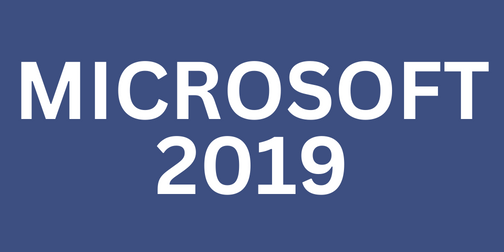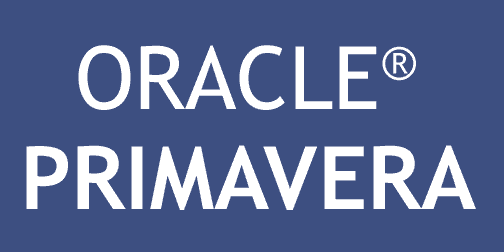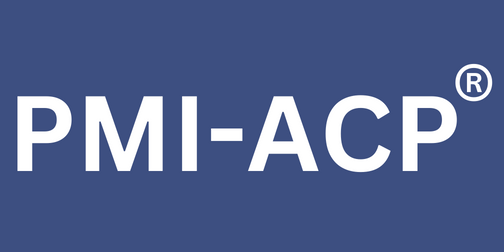Why a plan is not a strategy
Posted On September 3, 2024 - 14:36 PM
Reasons a Plan Is Not a Strategy: Knowing the Distinction
Within business and management, "plan" and "strategy" are frequently utilized synonymously. However, attaining long-term success requires knowing how these two ideas differ from one another. Both are necessary for an organisation to succeed, yet they have different effects and perform various functions. This blog will discuss the differences between a plan and a strategy and how understanding them may make or break your company.
The Core of a Scheme
A plan is a thorough road map that specifies the precise procedures and activities needed to accomplish a given objective. It frequently has a deadline and concentrates on the "how" of accomplishing goals. A plan addresses daily tasks and is tactical and operational.
A plan: what is it?
A plan is a thorough description of the steps required to accomplish a particular objective. It serves as a roadmap outlining the tasks that must be completed, along with when, who will complete them, and how. A plan is tactical in nature and usually focuses on short-term goals.
Important Features of a Plan:
-
Detailed Actions: A plan outlines the precise measures needed to accomplish an objective.
-
Short-term Focus: Plans frequently center on current or near-term goals.
-
Execution-Oriented: A plan is concerned with how tasks will be completed; it is about getting things done.
-
Example: A business may have a marketing strategy that details the campaigns it will run in the upcoming quarter, along with the channels, target market, and budget.
A strategy: what is it?
Conversely, a strategy is a high-level plan or a framework that outlines how a company will accomplish its long-term objectives. It involves making decisions and establishing priorities in line with the goals and objectives of the company. A strategy aids in navigating the intricacies of the competitive environment and offers direction.
Important Qualities of a Strategy:
-
Long-term Vision: Long-term objectives and results are the main emphasis of strategy.
-
Guiding Framework: A strategy offers a collection of tenets or directives that impact the process of making decisions.
-
Prioritization and Choice: Developing a strategy requires deciding where to direct resources and energy.
-
For example: For instance, over the next five years, a company's strategy might center on innovation and ethical sourcing in order to establish itself as a pioneer in sustainable products.
Important features of a plan consist of:
Specificity: A plan often contains extensive task, time, and resource lists.
Tactical Focus: It addresses the "how" of accomplishing goals, including how resources will be distributed, how tasks will be finished, and how deadlines will be reached.
Short-term Orientation: As circumstances change, plans are frequently short- to medium-term and subject to revision.
The Character of Strategy
In contrast, a strategy is a high-level approach that outlines the "what" and "why" of accomplishing long-term objectives. Setting a course and making decisions that support an organization's vision and mission are key components of strategy. It is more about figuring out where to put things and what general direction the organization needs to go.
Important traits of a strategy consist of:
Visionary Outlook: A plan is in line with the organization's overarching mission and vision and concentrates on long-term goals.
Making decisions Framework: Choosing where to compete, how to stand out from the competition, and what value to provide to clients are all part of the strategy.
Adaptability: A strategy, as opposed to a plan, is adaptable and may change as organizational priorities and market conditions do.
Why a Strategy Is Not a Plan
Prioritize execution over direction
An execution plan is concerned with this. It describes in depth how to complete particular jobs. On the other hand, strategy is about determining the course. It responds to the queries: Where should we go? Why is this our best course of action?
Short-term vs. Long-term
Plans are typically limited to a certain period, most often a short one. They deal with urgent duties and objectives. A long-term strategy aims to maintain a competitive advantage over time.
Operational vs. Strategic Decisions
Plans entail daily decision-making and are operational. On the other hand, strategy entails making important choices that have an impact on the entire company. It involves deciding which items to develop, which markets to enter, and how best to deploy resources.
Flexibility vs. Rigidity
A plan is typically inflexible, requiring the completion of predetermined procedures to accomplish a given objective. It is possible to view straying from the plan as a failure. But a strategy is adaptable. It permits modifications and revisions in response to new facts coming to light or changes in the competitive environment.
Goals vs. Means
A plan is a way to go somewhere. It is a tool for accomplishing a particular objective. On the other hand, strategy is all about the goal. there all comes down to defining success and choosing the most effective strategy to reach there.
The Relationship Between Planning and Strategy
Although they are not the same thing, plans and strategies are related. Without a plan, a strategy is merely a vision without a course. On the other hand, a plan without a strategy is just a series of steps with no apparent goal. Organizations require both a thorough plan outlining how to get there and a strong strategy outlining their direction and purpose to flourish.
The Risks of Not Having a Strategy for Your Planning
It's like sailing without a destination when you have a plan but no strategy. Although there is a lot going on, it is aimless and undirected. Planning-only organizations may accomplish tasks well, but they may not make significant progress toward their long-term objectives.
The fallout from planning without a strategy
-
Incoherent Efforts: In the absence of a well-defined plan, disparate divisions may endeavor to achieve incompatible objectives, resulting in resource wastage and internal discord.
-
Short-Term Gains, Long-Term Losses: Strategies centered on short-term gains may fail to consider the wider picture, resulting in short-term gains that turn out to be bad long-term.
-
Lack of Innovation: Planning frequently becomes regular and reactive in the absence of a strategic vision, which stifles innovation and creativity.
Why Understanding the Difference Between a Plan and a Strategy is Crucial in 2024
As we enter 2024, the business landscape is more complicated and dynamic than ever. Rapid technological advancements, changing consumer habits global economic shifts and increased competition are only a few of the variables that companies must manage. In this scenario, the difference between a strategy and a strategy is never more vital. The reason why understanding this distinction is essential in 2024:
1. Navigating Uncertainty and Change
The speed of change that is happening in the business world is unparalleled. From technological innovations such as AI and blockchain, to unpredictable geopolitical events, and changing markets, companies are always facing new issues.
-
The importance of strategy: A robust strategy gives a long-term perspective and guidelines that aid businesses adapt to changing conditions. It helps businesses remain focused on their primary goals, even if the path that leads to the goals has to change.
-
Why Planning is Important: Effective planning translates strategy into actionable actions, so that your organization can respond rapidly to opportunities or threats when they emerge.
In 2024, companies that are unable to differentiate between strategy and planning run the risk of becoming reactive instead of proactive and making decisions that could jeopardize their long-term growth.
2. Inline With Rapid Technological Advancements
The technological landscape is changing at a rapid pace with advances in AI machine learning and automation and digital transformation changing the way industries operate.
-
The importance of strategy: A forward-thinking strategy assists organizations in determining the right technology to pursue and the best ways to make use of these technologies to gain a competitive advantage. It makes sure that the adoption of technology is in line with the overall goals of the business instead of being driven by short-term trends.
-
The importance of planning: Detailed planning is essential to incorporate new technologies, incorporate the new technologies into current systems and also to educate employees. Without a plan in place, even the most effective technology strategy could fail.
In 2024, companies that are aware of the distinction between strategy and planning will be better equipped to leverage the power of new technologies to propel growth and innovation.
3. Competing in a Globalized Market
Globalization is growing which brings both opportunities as well as problems. Businesses must compete globally and face competition from companies across different countries, with varying consumer expectations, regulatory frameworks and economic circumstances.
-
What is the importance of strategy? A well-defined strategy will help companies determine where to be competitive and which markets to join and also how to distinguish from their competitors on a global scale. It is the basis for making crucial decisions regarding the allocation of resources and market positioning.
-
The importance of planning: Once a global strategy has been put in place thorough planning is required to manage the complexities of various markets including regulatory compliance, local marketing campaigns, as well as the management of supply chains.
The capacity to successfully distinguish between strategy and planning is essential to be successful in an increasingly connected and globally competitive market.
4. Responding to Consumer Expectations
The modern consumer is more educated and empowered than they ever have been. They are looking for customized experiences, and seamless interactions across channels and brands that are aligned with their ideals.
-
Why Strategy is Important: A strategic approach aids businesses in understanding and anticipating the changing behaviour of consumers, allowing companies to design products services and experiences that can meet changing expectations.
-
Why Planning is Important: Effective planning ensures that an organization can deliver its commitments to consumers from product development to customer service, and even beyond.
In 2024, companies that can align their strategies with consumer expectations and efficiently plan their strategies to meet them will be better able to establish strong, long-lasting customer relationships.
5. Sustaining Competitive Advantage
As industries become increasingly saturated, retaining an edge in the market is more than just short-term planning. It requires a vision that guides the decision-making process and allocates resources over the long run.
-
Why Strategy is Important: A strategy provides the framework for establishing and maintaining competitive advantage via the development of new products, cost-leadership differentiation, cost leadership, or the combination of all three.
-
Why Planning is Important: Planning turns strategic goals into actuality, making sure that the company can carry out its plan and keep its competitive advantages.
In 2024, companies that do not distinguish strategies from plans may be losing their competitive edge as they concentrate on their immediate needs without a clear and long-term plan.
6. Ensuring Organizational Resilience
In this era of uncertainty, resilience within organizations -- the ability to grow and adapt in the environment of change is more crucial than ever before.
-
Why Strategy is Important: A resilient organization employs a strategy that considers the possibility of risks and allows its organization to shift and adjust as needed.
-
The importance of planning: Planning ensures that the organization can take contingency measures and respond to crisis situations in a manner aligned with its strategic objectives.
The year 2024 is when resilience is expected to be an important factor for business and understanding the distinction between strategies and planning will be crucial to help build resilience.
In summary
Any business hoping for long-term success has to know the difference between a plan and a strategy. A plan offers the specific actions to carry out the vision, but a strategy gives the direction and vision. Leaders can better manage the intricacies of business and steer their firms toward sustainable success by understanding the difference between the two.
Businesses can escape the trap of becoming unduly focused on short-term goals at the expense of long-term performance by realizing that a plan is not a strategy. Alternatively, by developing a strategic framework that directs planning and decision-making, they may make sure that every activity is in line with the larger goals of the company.
Faq
Q1. What is the difference between a plan and a strategy?
Ans. A plan has a more limited scope than a strategy, and the process to develop it should be focused and fast, so you get into action as soon as possible. A Strategy is the story of an exciting journey; it explains how you plan to move from where you are today to where you eventually want to end.
Q2. What is not a strategic plan?
Ans. Strategic planning is not driven by one goal, one idea, or one set of demands, nor is it about trying to form a plan that is all things to all people.
Q3. What comes first, a plan or strategy?
Ans. In a perfect world the strategy always comes before a plan and shapes the details of the plan. A strategy is the overarching wisdom that coordinates all of the plans in order to effectively reach the goals. Remember, having a plan is essential, but developing a strategy should always come first.
Q4. Is a strategy just a plan?
Ans. In short, strategy is the act of making an integrated set of choices, which positions the organization to win; while planning is the act of laying out projects with timelines, deliverables, budgets, and responsibilities.
Q5. What are the 5 Ps of strategy?
Ans. This captures five dimensions that any strategy can be built around – perhaps just one, hopefully a few, or even all of them! It provides a comprehensive way to analyse and develop meaningful, easy-to-understand strategies. So, what are the 5 P's? They stand for Plan, Ploy, Pattern, Position, and Perspective.


















